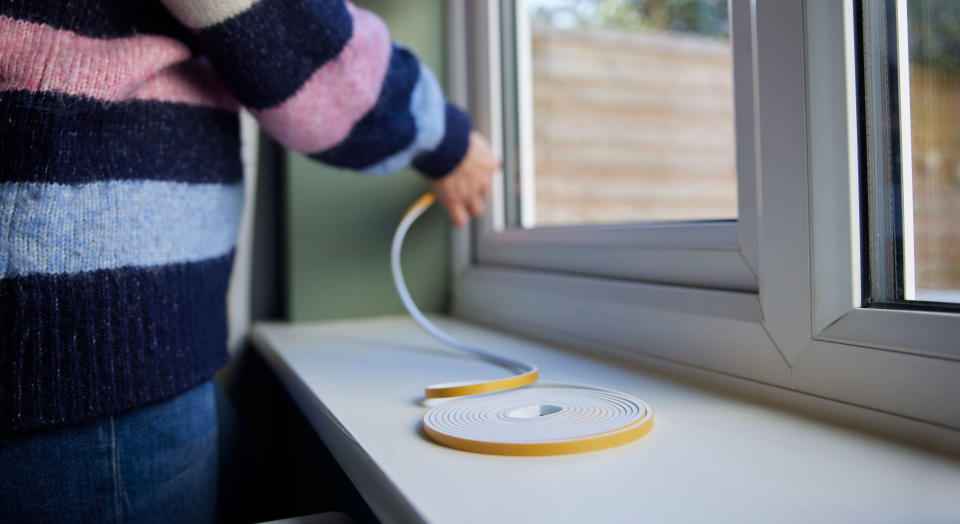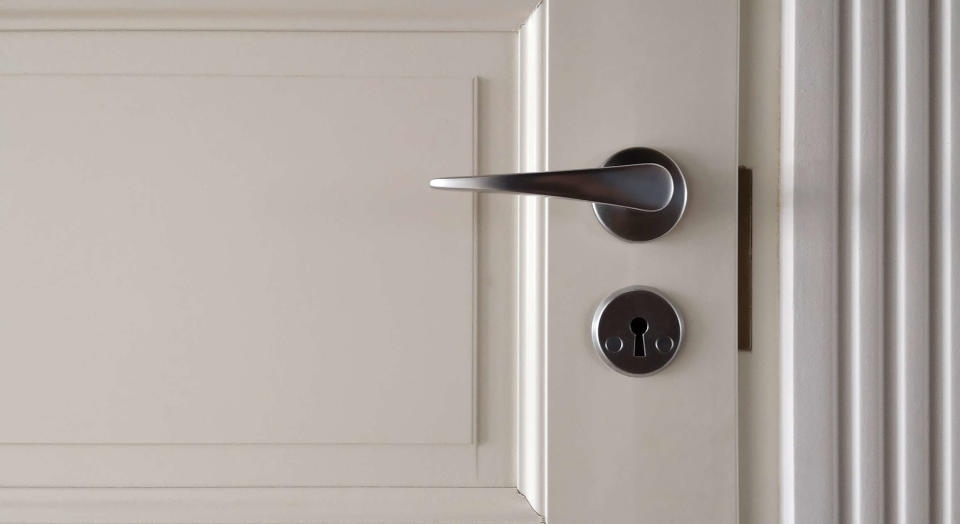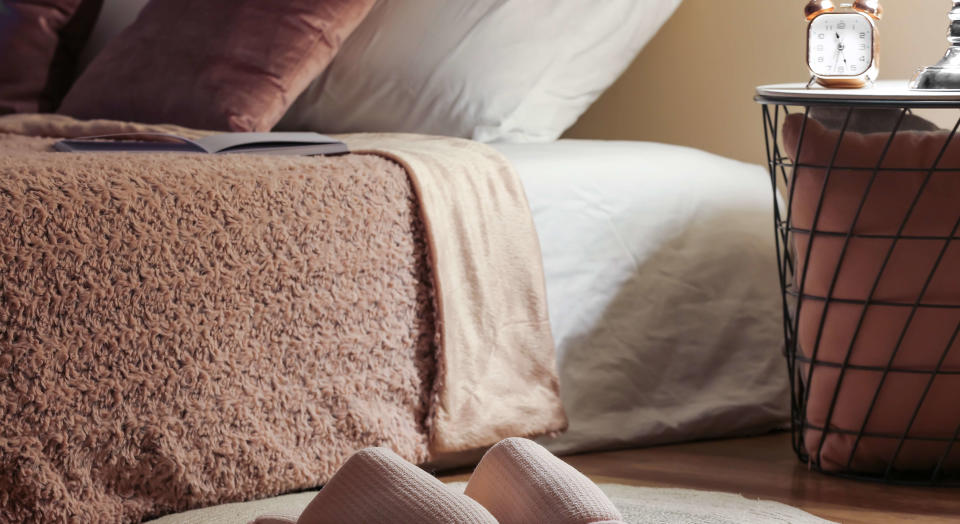5 tips to keep your house warm without turning up the thermostat

As the bitter weather descends, it’s tempting to turn the thermostat up and keep the heating on all day, but you could face a hefty energy bill. Luckily, there are other ways to retain heat without turning up the dial.
Having lived in a drafty Victorian property for 25 years, I know from bitter experience how tempting it is to turn up that thermostat. But whether you live in an old or new property, there comes a time when even the most well-insulated of houses can’t beat the cold winter climes.
So, after facing my battle with a cold house, I’m sharing these top 5 tricks to keep the draft out and the heat in.
1. Beat the draft

The best way to beat the chill is to check for drafts in your home, as heat escapes wherever it can. And one of the biggest areas of heat loss is through windows that aren’t properly sealed.
Living in an older property with a mix of original sash windows and double-glazed replacements, I can vouch for the difference in heat retention between the two types. My original timber-framed windows definitely allow more heat to escape.
The first thing is to determine is where the biggest leaks are coming from. The Energy Saving Trust, based in the U.K., recommends looking for obvious gaps where light is visible around doors and windows. And listen for rattles and whistling noises, especially during high winds.
Apart from your windows, check around floorboards, skirtings and fireplaces. Heat will disappear through any gaps it can find.
How to seal windows
Windows can be sealed with draught-proofing strips. Self-adhesive foam strips are cheap to purchase and easy to install, but they tend to come unstuck. Metal or plastic strips with brushes attached are a better long-term solution.
Draft-proof doors
Cover your keyholes with metal flaps to prevent cold air from blasting in from outside. And remember your letterbox if you don’t have an outside mailbox. Add a draft excluder brush strip or a hinged flap draft excluder to the bottom of the door. A brush and wiper stripe can be added around the sides. Handy, removable draft excluders can be used for inside doors, which are easy to remove when you don’t need them. This black and white plaid pattern draught excluder ($23, Wayfair) will make an attractive addition to your home, or you could make your own.
2. Draw in the heat with curtains and blinds

While drawing curtains will help retain heat, it’s best to pull them right back in the daytime to gain warmth from the sun. Then, as the sun goes down, draw your curtains and blinds to add an extra layer of insulation. But what happens if you’re not in to pull down those curtains and blinds?
Daniel Hatfield, brand manager at Luxaflex says: “Motorized blinds will allow you to set a schedule or adjust the times your blinds open and close. By scheduling blinds to lower in the afternoon, you can retain the day’s heat gain, helping to have less reliance on heating systems. You could even program your blinds to lower a few minutes before the heating comes on in the evening so the heat isn’t lost through windows or doors.”
It's also important to consider how blinds are fitted. Andrew Chalk, director of operations at the British Blind and Shutter Association, says: “Typically, windows are the weak point in a building, and heat will always find its way to the colder surfaces. To maximize the effectiveness of blinds, the smaller the gap between the sides of the blind and the window frame, the better.”
You could swap your standard curtains for thermal curtains to retain more heat. As a guide to how you could benefit, the insulation value of curtains is measured in terms of its thermal resistance, or R-value. Standard curtains measure around R-1, and thermal curtains achieve around R-6.
Besides changing the type of curtains you have, consider the length. Even if your windows aren’t full length, curtains that hang to the floor will provide a greater screen than those that finish a few inches below a window sill. Although, make sure your curtains and blinds don’t block any heaters or radiators.
3. Cover your floor with rugs

I’ve always been against covering the original floorboards in my home with carpet. It didn’t seem the right thing to do. But although visitors admire the flooring, they don’t experience the cold. So, apart from sealing the gaps with a flexible filler, I cover the main living areas with rugs. This helps to provide an added layer of insulation by preventing drafts, keeping the indoor temperature more stable, and offering something softer underfoot.
The Rug Decor says: “Tile, hardwood and concrete have lower thermal resistance, which means they might feel cold to the touch and allow heat to escape more easily. Rugs act as a barrier between your feet and the cold floor, preventing the heat from your body from escaping quickly.”
If you’re looking for a rug for its insulation properties rather than just aesthetics, The Rug Decor recommends choosing a natural fabric, such as wool, as it’s a natural insulator.
4. Keep internal doors closed

The issue with my house is that the living and dining space has been knocked through, and the stairway opens into the living room. Combine this layout with a drafty house, and it’s not good news! Although the design could be better in terms of energy efficiency, knocking through two small rooms into one creates a better family space and brings in more light.
But to overcome the heat loss issue, I keep all internal doors closed when the heating is on and turn down the thermostat in my guest bedroom. You can still open the doors to ventilate your home, but this can be done earlier in the day when you’re relying on more sunlight to enter your home.
As I work remotely, I spend most of my time at home during the day. It simply isn’t feasible to keep the heating on all this time, so I tuck myself away in my office with a space heater. Rather than having it blasting out constantly and being shocked at the size of my energy bill, I switch it on from time to time when I need the extra heat. I’m also lucky enough to work in a space that gains the morning sun, so I benefit from this extra warmth.
5. Stay warm at night

Going to bed in the cold is not much fun and delays the time it takes to drop off. But, apart from layering up with warm pajamas and thick socks, there are several other options to keep you warm at night without keeping the heating on.
Replacing lightweight bedding with heavier blankets or one of the best duvets with a higher tog rating will keep you warm and snug for a restful night and improve the quality of your sleep. For me, I prefer a duvet and snuggle up under a tog rating of 10.5 tog during the colder months.
Another option is to invest in one of the best weighted blankets, which will keep you snug at night while offering an extra level of comfort than blankets or duvets. Weighted blankets may cause the same responses in the body as when you get a hug — the extra pressure stimulates your senses to make you feel calm, leading to a more relaxed night’s sleep. Our contributor, Andy Sansome, tried a weighted blanket for over a year, and it changed how he sleeps for the better.
Although an electric blanket won’t keep you warm all night, it can provide an extra level of warmth when you first tuck up or when you're curled up watching a film in the evening. And it’s far cheaper than keeping the heating on. Sealey’s has a cosy flannel electric blanket with 10 heat levels ($69, Amazon).
More from Tom's Guide
The best smart thermostats to keep your home warm
Discover 5 reasons you should stop sleeping with the heat up at night
And 9 bright ideas on how to bring light into your home this January

